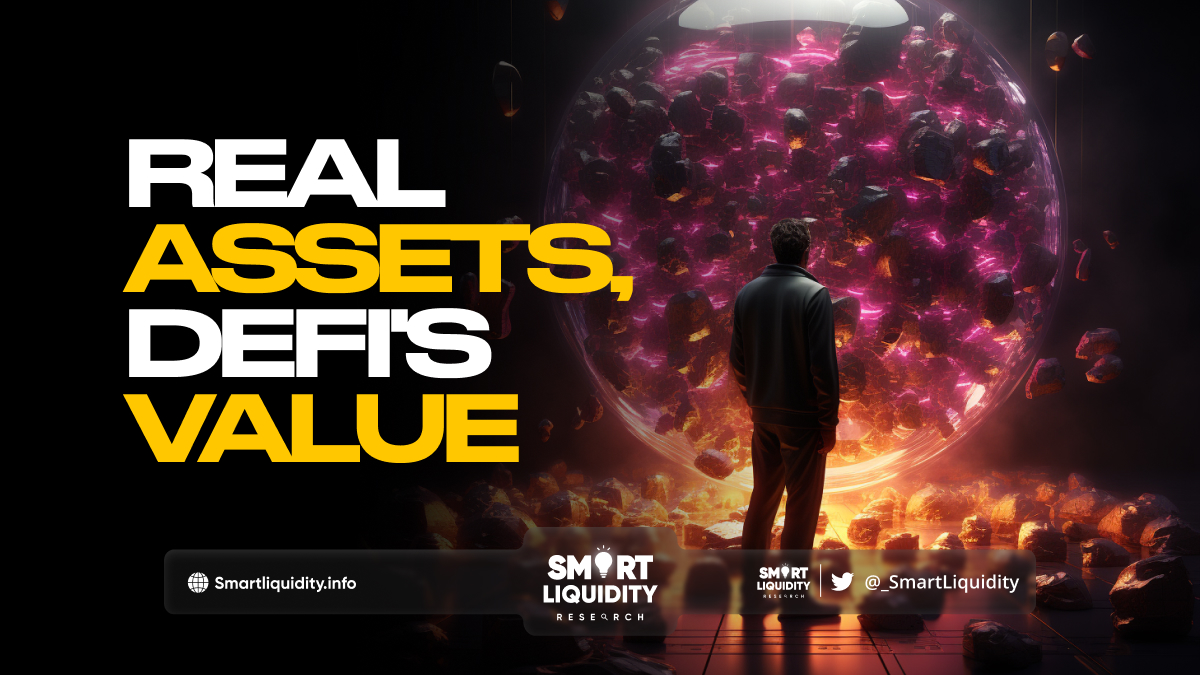Unlocking Value: The Role of Real World Assets in Decentralized Finance


In the ever-evolving realm of blockchain, the landscape has expanded into a sophisticated ecosystem, where blockchain’s transformative power is harnessed to tokenize real-world assets, democratize ownership, and redefine the landscape of decentralized finance (DeFi). This article delves into the multifaceted layers of blockchain innovation, exploring its impact on the financial landscape and the broader implications for global economies.
Beyond Crypto: Exploring the Diverse Landscape of Tokenized Real World Assets.
Blockchain’s utility extends beyond the purely digital realm, with the advent of tokenization enabling the representation of tangible assets on the blockchain. Real estate, art, and even commodities are being transformed into digital tokens, providing unprecedented liquidity and accessibility. This not only broadens the investor base but also introduces a new level of transparency and efficiency in traditionally opaque markets. As industries embrace this evolution, the tokenization of real-world assets stands as a testament to blockchain’s capacity to bridge the gap between traditional and digital economies.
Furthermore, the immutability of blockchain ensures the integrity of ownership records, mitigating fraud and streamlining complex processes like property transfers. Tokenized real-world assets are laying the foundation for a future where ownership is borderless, and the barriers to entry for global investment are significantly lowered.
| Category | Real World Asset Examples | Role in DeFi | Benefits |
| Traditional Finance | Real estate, equities, commodities | Collateral for loans, tokenized for fractional ownership and global access | Increased liquidity, diversification, and democratized access to financial markets |
| Illiquid Assets | Fine art, collectibles, vintage cars | Tokenization for fractional ownership and trading on DeFi platforms | Increased liquidity, improved price discovery, and access to a global market |
| Income-Generating Assets | Trade receivables, rental properties | Tokenization for fractional ownership and income-sharing | Access to alternative investments and passive income streams |
| Data and Identity | Personal data, medical records | Tokenization for controlled data sharing and monetization | Individual control over data and ability to generate revenue from it |
A New Era of Fractional Ownership: Democratizing Access to Traditionally Exclusive Assets.
Blockchain introduces a paradigm shift in ownership structures, ushering in a new era of fractional ownership. Previously exclusive assets, such as high-value real estate or rare art pieces, can now be divided into digital fractions, allowing a broader spectrum of investors to participate. This democratization not only enhances market liquidity but also provides smaller investors with entry points into markets traditionally reserved for the affluent.
Fractional ownership not only expands investment opportunities but also aligns with the decentralized ethos of blockchain. Smart contracts automate the distribution of dividends and ownership rights, eliminating the need for intermediaries. This evolution in ownership models represents a seismic shift in wealth distribution, challenging traditional power structures and fostering a more inclusive financial landscape.
Real Yield Meets Decentralized Finance: Unlocking Efficiencies and Higher Returns.
The integration of real-world assets into decentralized finance (DeFi) platforms heralds a new era of financial innovation. By collateralizing digital assets with tangible value, users can access loans, earn interest, and engage in sophisticated financial instruments within the decentralized realm. This fusion of the tangible and the digital not only enhances the stability of DeFi but also provides real yield opportunities in a space often associated with volatility.
Through blockchain-based smart contracts, lending and borrowing processes are automated, reducing the need for intermediaries and minimizing the risks associated with traditional financial systems. The result is a more efficient and accessible financial ecosystem that opens new avenues for individuals and businesses to optimize capital and generate sustainable returns.
DeFi 2.0: The Rise of Hybrid Finance and Real-World Asset-backed Stablecoins.
As blockchain innovation progresses, DeFi evolves into its next iteration – DeFi 2.0. This phase witnesses the integration of real-world asset-backed stablecoins, providing the benefits of stability while maintaining the decentralized nature of blockchain. These stablecoins are pegged to the value of tangible assets, offering a reliable store of value in a dynamic digital landscape.
The rise of hybrid finance signifies a maturation of DeFi protocols, mitigating the price volatility concerns that have been a hallmark of the cryptocurrency space. This evolution brings forth a financial ecosystem that combines the best of both worlds – the stability of real-world assets and the efficiency of blockchain technology.
Shaping the Future of Financial Inclusion: Real World Assets and DeFi Empowering the Unbanked.
In the pursuit of financial inclusion, the combination of real-world assets and decentralized finance emerges as a potent force. By leveraging blockchain technology, individuals in underserved regions gain access to a myriad of financial services, from microloans collateralized by tangible assets to earning interest on tokenized real estate.
This transformative potential extends beyond geographical boundaries, encompassing the unbanked and underbanked populations globally. Through blockchain, financial services become borderless, fostering economic empowerment and reshaping the future of inclusive finance.
Conclusion
In conclusion, the layers of blockchain innovation extend far beyond the confines of Bitcoin, propelling us into an era where real-world assets are seamlessly integrated into the digital realm. From fractional ownership to the evolution of DeFi, the blockchain landscape is forging a path towards a more accessible, transparent, and inclusive financial future. As we navigate this intricate web of possibilities, it becomes evident that blockchain’s transformative power has the potential to revolutionize traditional finance and empower individuals on a global scale. The journey beyond Bitcoin is one of continuous exploration, pushing the boundaries of what is conceivable in the decentralized landscape.




